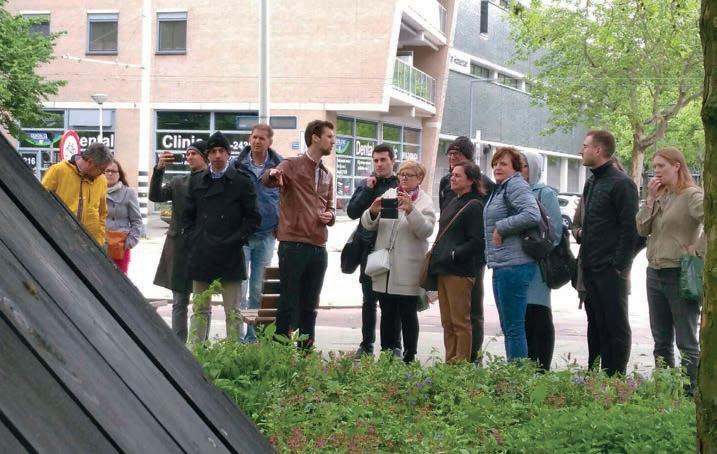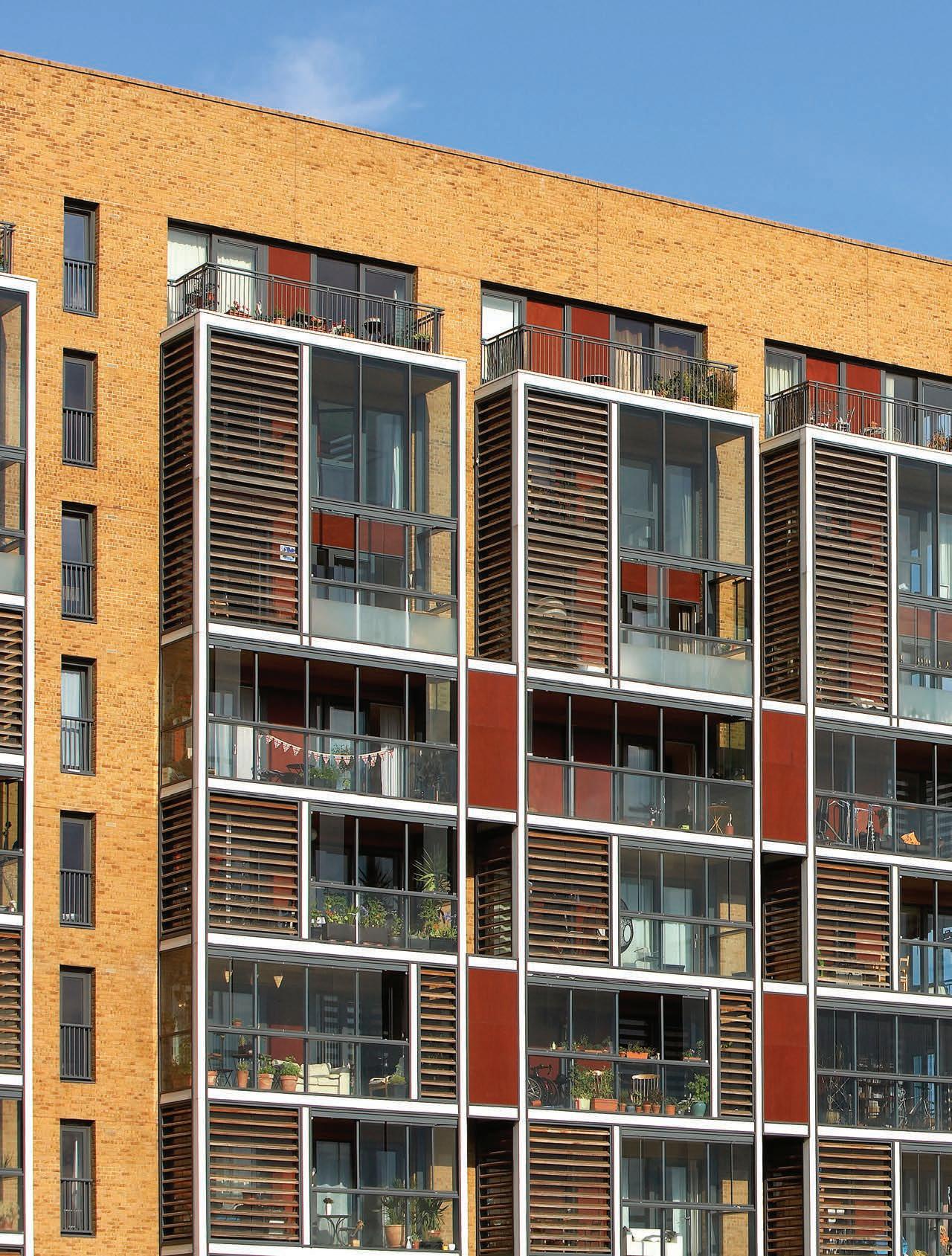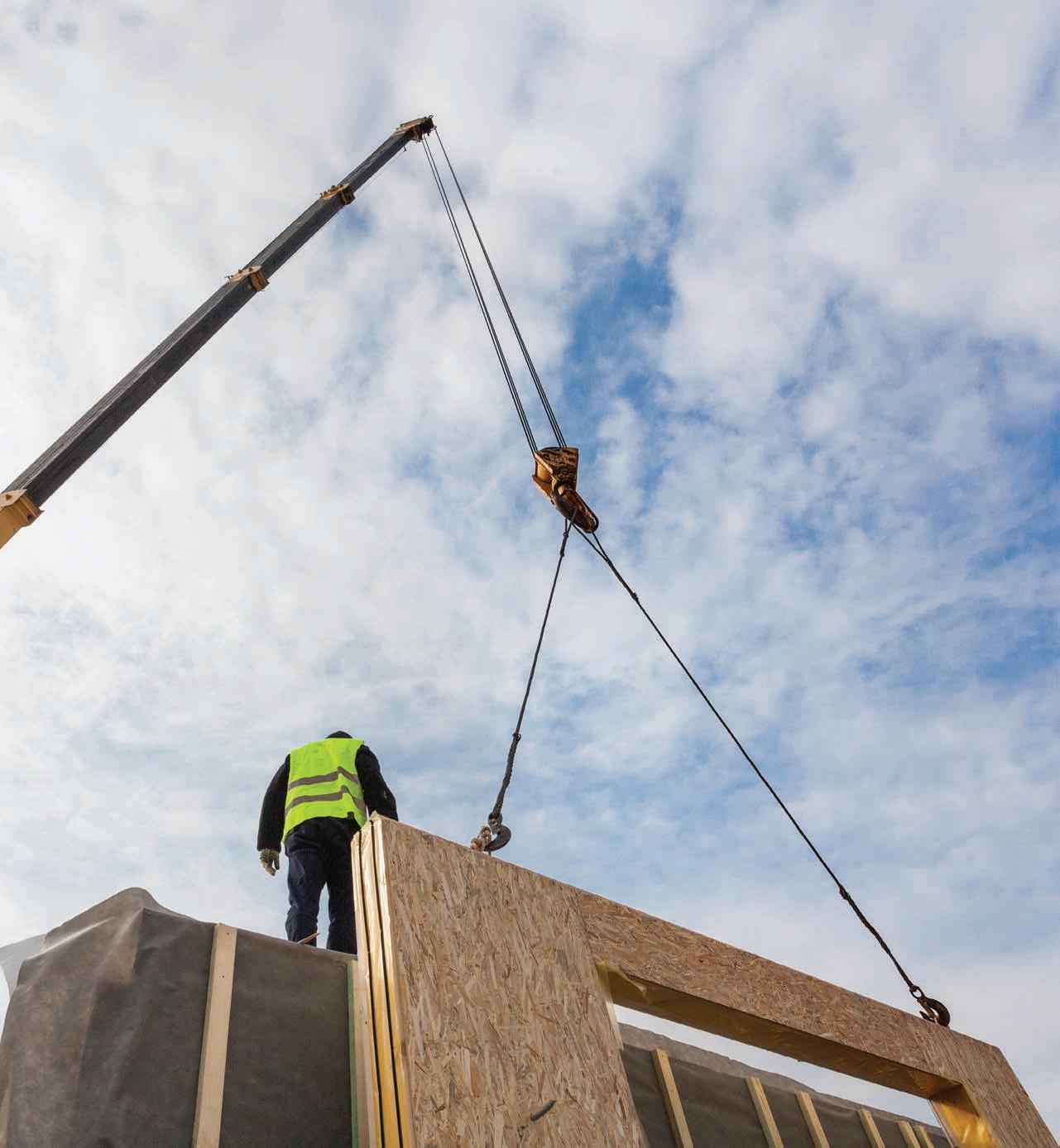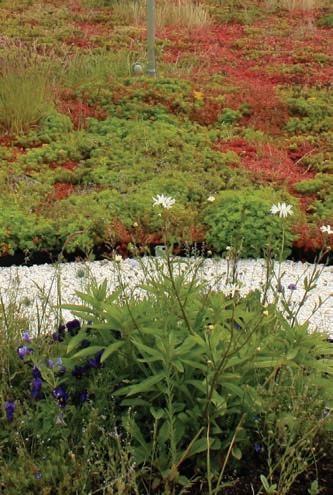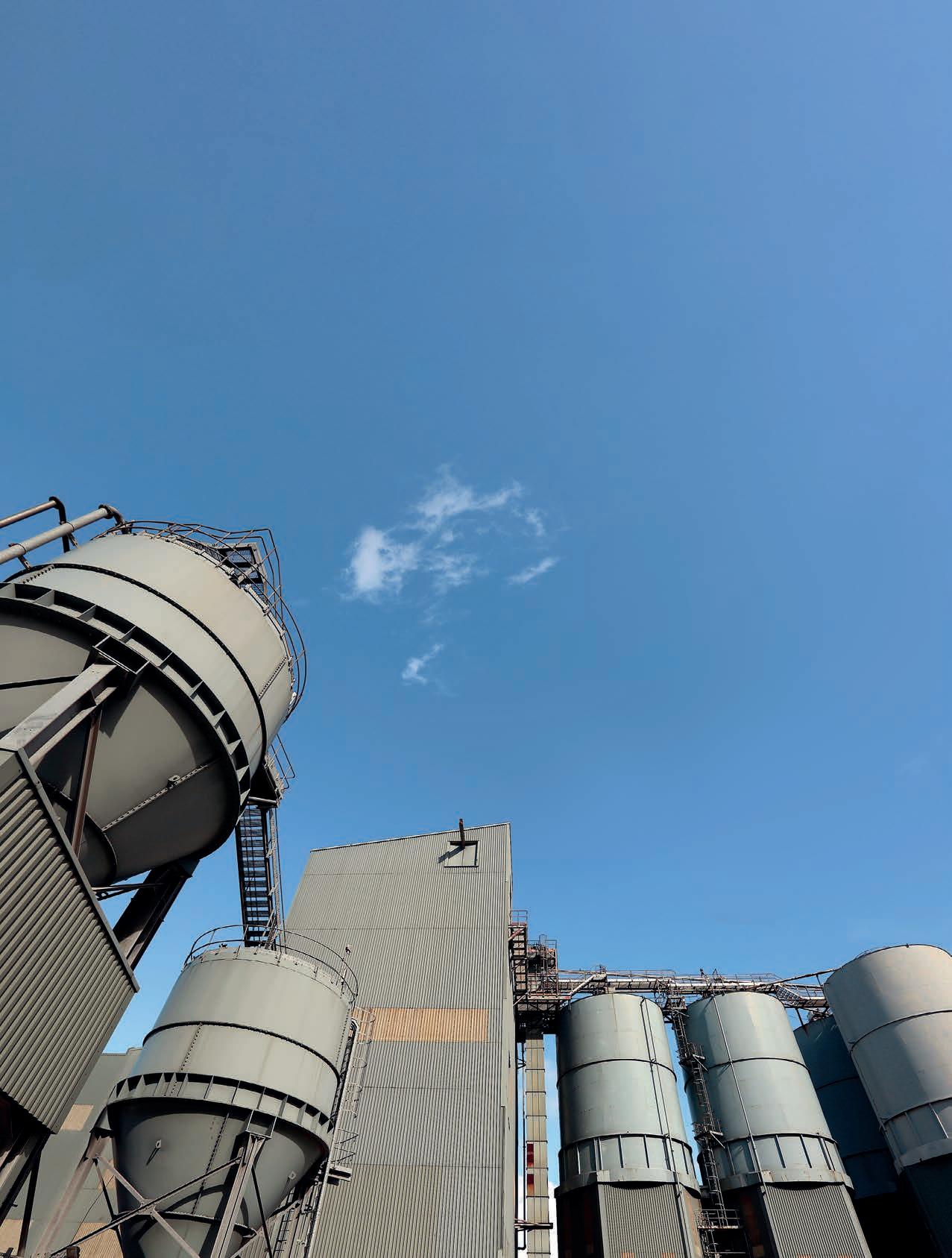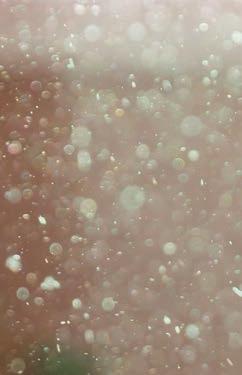
7 minute read
Pooled knowledge
European cities need to transform their infrastructure if they are to meet the emerging challenges posed by the eff ects of anthropogenic climate change. From a water perspective, this means there is now a higher probability of fl ooding from heavier precipitation and storm surge, but also an increased risk of not having enough water available to keep taps fl owing.
Further issues arising include fl ood damage to buildings and other street infrastructure; sewer overfl ows polluting watercourses and water bodies, and the declining quality of lakes, rivers and reservoirs. Biodiversity is also at risk, along with public health and the psychological wellbeing of those aff ected by extreme weather events.
UN-Habitat’s Urban Resilience Hub defi nes urban resilience as: “The measurable ability of any urban system, with its inhabitants, to maintain continuity through all shocks and stresses, while positively adapting and transforming toward sustainability” – and a key part of that ability will be technological. It is against this background that Isle set up its Urban Resilience Technology Approval Group (UR TAG) in 2019.
The group has spent the past year actively identifying and piloting water technologies that help transform cities’ infrastructures as they adapt to climate change. Designing and structuring the urban environment to absorb and capture as much rainwater as possible can reduce and prevent fl oods. The harvested rainwater can also be repurposed for irrigation and greywater domestic use.
China is leading the way to sustainable drainage systems (SuDS) at city scale, with plans for sponge cities where 80% of the country’s urban centres harvest and reuse 70% of rainwater. Sponge cities are promoted as an holistic approach to rainwater management, not just limited to China, but also taking place in the USA, UK and across other European projects. The goal is to buff er rainwater at its place of origin. Green elements, such as swales, tree-drains, and green roofs and façades help to evaporate, store and infi ltrate the rainwater, which eff ectively reduces the outfl ow. We see these holistic approaches to managing a city’s water as a strong trend across the world – not only one single solution for one problem, but rather an integrated approach to tackling several challenges.
Building SuDS at scale and driving urban resilience requires signifi cant investment, which is another reason UR TAG is so important. Utilities and
Isle’s Technology Consultant Sylvia Schuster explains why managing the eff ects of climate change requires urban transformation, specifi cally for water management
Bosco Verticle – nature-based urban resilience infrastructure in Milan, Italy
municipalities can pool project experiences, share best practice and collaborate on technology trials so that they can learn from each other, avoiding unnecessary repetition and costly mistakes.
Meeting of minds
Current UR TAG members include HSY, the Helsinki Region Environmental Services Authority; together with MM, which manages water and wastewater services in Milan, Italy; and the Belgian utilities Aquafi n and WaterGroep. Isle Utilities and UR TAG also have a partnership with CALL Copenhagen – the Climate Change Living Lab – which enables Danish cities and utilities to be introduced, too. Members meet to exchange knowledge and expertise. For example, February’s excursion to Antwerp, Belgium, saw members exploring the city’s urban resilience infrastructure.
Aquafi n’s Els Liekens notes: “To be eff ective, we need to improve research and innovation, and by using UR TAG we have a clarifi ed view of the available technologies and don’t have to invent it all again. The regular meetings are a useful opportunity to network and see how other cities and utilities are managing their climate resilience challenges and keeping on track with interesting solutions.”
Isle uses an online portal that lists all the technologies it has screened. All UR TAG members get access to that database where they can see detailed information about technologies and are able to exchange knowledge about them. Excursions to sites where innovations are being used off er valuable insight and allow members to ask questions of those using the technology – including the applicability of the solutions in their respective organisations and countries. Discussions can range from the need for
End-user forum
A proposed technologies list is prepared before each UR TAG event, following a careful due diligence process, and members can vote for their top fi ve. These companies will then be invited to pitch at the event.
The events usually take place over two days and have included an excursion in the host city to see initiatives that have already been implemented. Presentations of case studies are shared before interactive sessions take place. The technologies are collaboratively reviewed in a Q&A process, aft er which members discuss the technology complete feedback forms. Feedback is anonymised and sent back to the tech company, which then has the opportunity to reply to open questions. There may be interest by one or several parties for a trial.
There are also strategy sessions and technology updates. It is important that it is an end-user forum, where the members are comfortable sharing. Aft er all events, a summary with the highlights of the day are shared via Isle’s TAG portal.
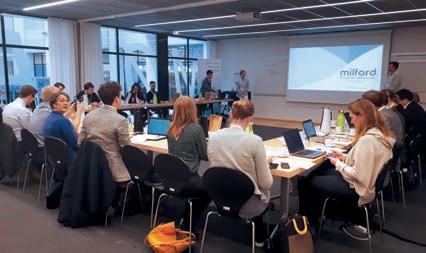
Urban Resilience TAG meetings are an opportunity to pool project experiences, share best practice and collaborate
a sophisticated hydraulic model at the start of soft ware testing to the interest in real-time live web services for precipitation events.
A watershed moment
With regards to stormwater management, integrated solutions with nature-based elements are preferred. If you have a neighbourhood that is constantly fl ooded, the fi rst step is to map out the hot (or rather wet) spots where fl ood events are most problematic. A variety of technologies can then be considered to mitigate impacts. Permeable pavements instead of non-permeable asphalts could allow the stormwater to infi ltrate into the ground – either to a storage tank or to the groundwater aquifer. We have seen permeable pavement technologies that only buff er the water, but there are also technologies that include a fi ltration stage. Modular wetland technologies incorporating fi lters for heavy metals can be installed at parking areas. Stormwater can be heavily polluted; but by treating it on site, the same water can be reused for irrigation, for example. With combined sewer overfl ows, there are several hardware technologies to reduce the risk of pollution to surrounding water sources, such as automatic gates that close when the water reaches a certain level.
There are smart soft ware solutions that allow users to monitor their whole network, sometimes the entire urban water cycle, combined with a real-time live
Urban Resilience practitioners on an excursion during a platform meeting held in Rott erdam, Netherlands
forecast of precipitation. The soft ware could monitor water storage capacity and send out fl ood risk alerts and suggested actions to take. The group has also seen soft ware that analyses recent weather data to identify drought risk and suggests the best actions for sustainable water resource management.
Enhancing biodiversity improves urban resilience, and by increasing green areas in cities not only increases the biodiversity, it also improves quality of life. UR TAG has witnessed systems that enable urban trees’ roots to grow bett er by allowing stormwater to infi ltrate into the ground. It has also reviewed various green wall and green roof concepts as well as fl oating ecosystems for urban water bodies. Essential to all these measures is citizen engagement and participation. If the people living in the neighbourhood and local community are engaged in the planning process, they are more likely to feel ownership long aft er the project’s implementation.
The focus of the UR TAG technologies depends on the interests and needs of its members, such as sustainable decentralised energy systems, alternative water sources or greywater recycling. This is assessed aft er every meeting to help the process of screening technologies. Until now, there has been a focus on holistic water management. However, because of Covid-19, the group is exploring technologies that help build resilience towards future pandemics, such as those that enable more remote working. UR TAG is looking into natural disaster resilience, too. Sharing experiences of diff erent innovations and providing an environment to discuss their applications is a very positive approach to meeting the challenges of climate change.
Isle is an independent technology and innovation consultancy that brings together technical and commercial specialists. Through its global innovation forum, the Technology Approval Group (TAG), it identifi es emerging technologies, connects expertise and investment to accelerate their adoption. For more information, visit isleutilities.com To join UR TAG, email bastian.piltz@isleutilities.com
